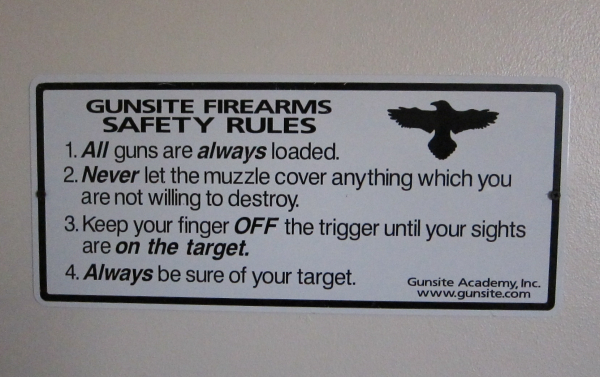
It seems when we discuss safety, people rattle off The Rules from memory with little or no explanation. As there are vast numbers of people who’ve become gun owners rather suddenly, a little advice about explaining The Rules is in order. Some of this is ripped from the Master. More is ripped from mentors Clive Shepherd and Manny Kapelsohn. A bit was (more recently) recovered from Marcus Wynne in a very interesting blog post on teaching new shooters.
As we’ll be explaining The Rules, it’s useful to post the individual injunction and follow it with an explanation I recommend. The Rules are reminders; invocation of Rule 2, for example, should initiate recall of what it actually means operationally, not just in ‘range-world’ – but also in ‘the real world.’
Rule 1: All guns are always loaded.
Allowing for the possibility of the gun to be unloaded is ‘Loserthink.’ Saying “treat as if” allows that possibility and predictably leads someone to conclude “well, this one isn’t loaded.”
Hint: That’s the one that will bite you.
Lose that nonsense. Trust no one. Trust not yourself and never, ever trust the gun. There’s one way, one way only, to determine the truth of the matter. Visually and physically inspect the piece. As we get further along, we’ll discuss how that’s accomplished. If you find that – wow – it was empty, that was a fluke. Next time it won’t be. If you set it down for a moment, it won’t be. If you reholster it, then later in the day remove it from the holster – check first. You may find a pesky cartridge made its way in there.
There is no reason to expect a gun to be empty except when the firearm is actually disassembled for inspection, cleaning or repair. Never assume that a gun is unloaded.
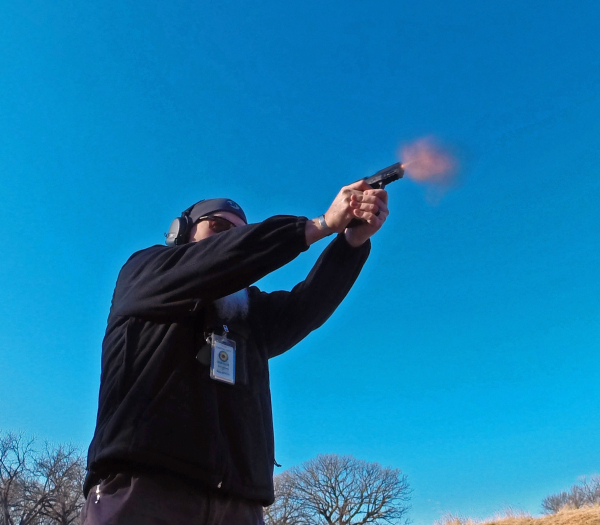
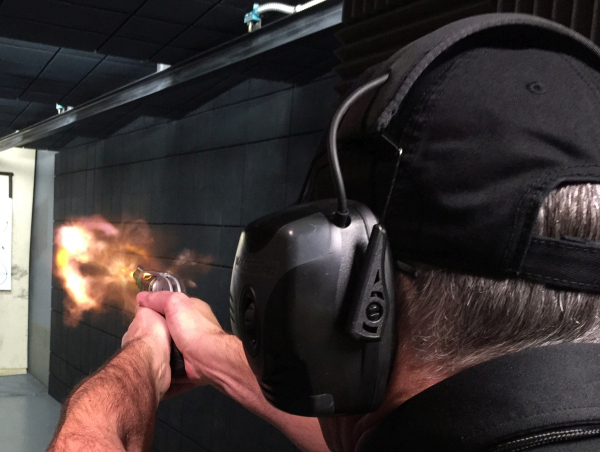
Rule 2: Never let the muzzle cover anything you’re not willing to destroy. On a shooting range, it’s easy; keep the muzzle directed into the safe backstop. If the guns are on the bench and people are downrange LEAVE THE GUNS ALONE. Don’t handle them with people forward of the muzzles. Most ranges have gone to insisting guns be ‘flagged’ on the bench – installing a chamber flag into the open action to show the guns are incapable of firing. Still it’s disconcerting to walk back up range seeing the muzzles directed at the target line.
If you are in the unenviable position of handling firearms off the range, the muzzle must be directed into the safest available direction. Where is that? Looking and thinking before gun handling is obligatory.
Centerfire handguns and rifle rounds will perforate typical residential wall construction nearly all the time. Having the muzzle sweep an empty room with people in the adjoining room is bad business. Don’t do it. If there’s no basement or you know it’s clear of people, down would be acceptable – but don’t let your feet get in the way. Muzzles up?
“I launched an arrow into the air, it landed I know not where.”
Well, someone does – someone who could get hurt.
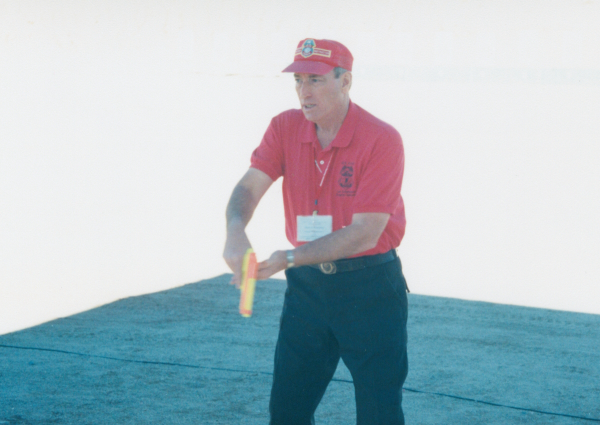
On a range, if no one’s forward at the target line, a muzzle is welcome to cover the impact berm. In a hospital parking lot, a shopping venue or in your house there ain’t no backstop. You need to find the safest available direction. That can be six o’clock (mind your feet!)
And that’s the point.
What’s a safe direction? Let’s ask the legal beagle: “A Safe Direction is one where NO injury and only minor property damage could occur if an unintentional round is fired.” Remember the “Laser Rule” – consider your firearms as having a laser beam coming out of the muzzle and whatever it touches will be cut through. Wherever the muzzle goes is where the laser goes – and it’s deadly.
Rule 3: Keep your finger off the trigger until the sights are on the target (and you have formed the intention to shoot). It’s not enough just to “keep your finger off the trigger;” it has to be out of and away from the trigger guard and held high on the gun (high as you can without disturbing the good firing grip). I first noticed world-class trainer John Farnam describe that as “register.” It’s where that index finger goes when you’re not shooting.
On target, on trigger. Off target, off the trigger and into register or index or whatever your term of choice is. If you have no intention to shoot, don’t aim in – remember Rule 2. Certain guns, striker fired, require you to pull the trigger before disassembly. No problem. With the muzzle in the safest available direction, remove the magazine, lock the slide to the rear. Check the chamber visually – and physically. With the muzzle covering the safest available area (and without having your hand or anything else in front of the muzzle), press the trigger.
Rule 4: Always be sure of your target.
Never shoot at anything you have not positively – visually -- identified. Know what it is, what is behind it and what might cross in front of it. Never ever shoot at a sound. If you can’t see it, you don’t shoot it. You are personally responsible for every bullet that you fire - you must know where the bullet will land before you shoot.
How does one share these things? Unless you have something to add or a better way to get the point across, use this.
Ripped from Marcus Wynne’s blog, here’s a way to start a shooting experience for new shooters on the range. It’s meant for one-at-a-time personal experience and it cuts through all this with some context before you discuss The Rules.
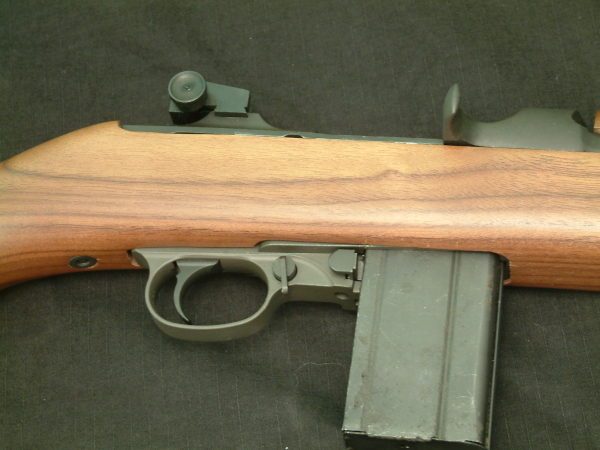
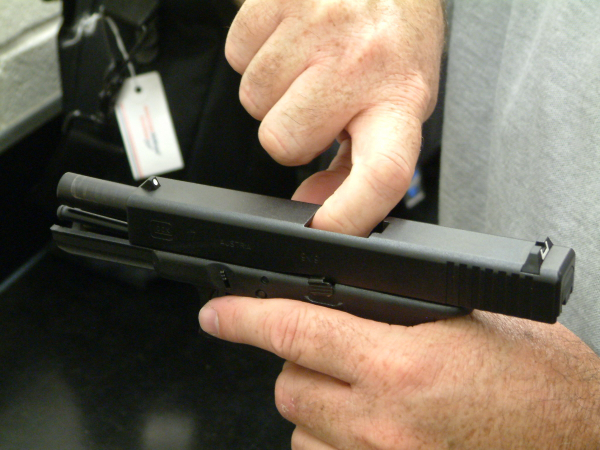
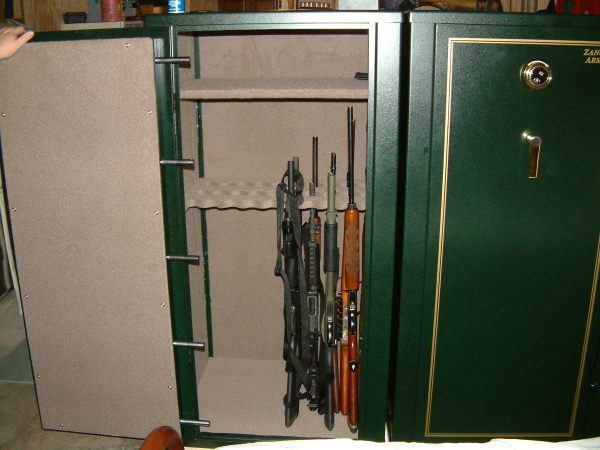
“Here’s a recommended sequence of instruction for a new handgun shooter:
1. Determine status of weapon - loaded, unloaded? External safety or no? Magazine in or out, loaded or unloaded, external safety or not?
2. How to make a weapon safe (sic): If (there is a) safety, look for F/S, engage safety. Remove magazine. Lock back slide and visually/physical inspect chamber.
3. How to load the weapon.
4. Muzzle awareness — guns are geometric instruments
5. Trigger finger awareness — location of finger trigger at all time.
The only safety briefing necessary for an experienced instructor and a novice is: “Do what I tell you to do. And only that.” At this point.”
You’re there to take care of muzzle direction and other safety issues (e.g., thumb behind and in line with the slide’s travel, etc.). There’s time for lecture-discussion format after the gun is actually fired.
And, no – you can’t “make a weapon safe.” You can only clear it and hope for the best.
- - Rich Grassi